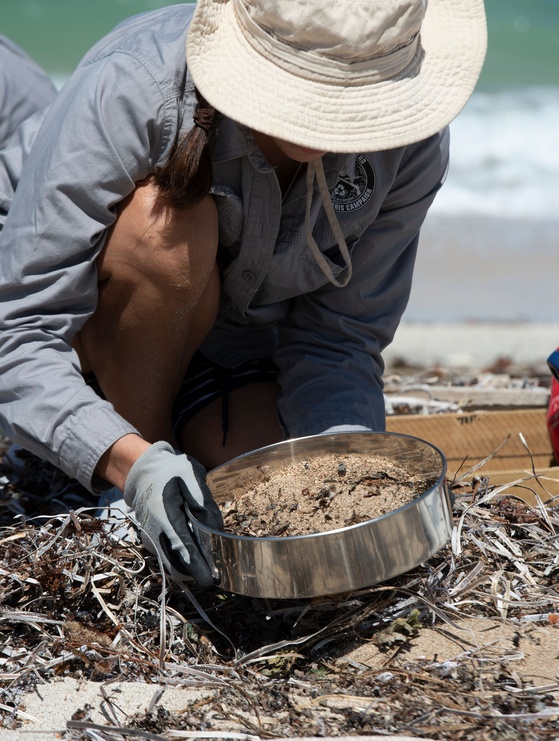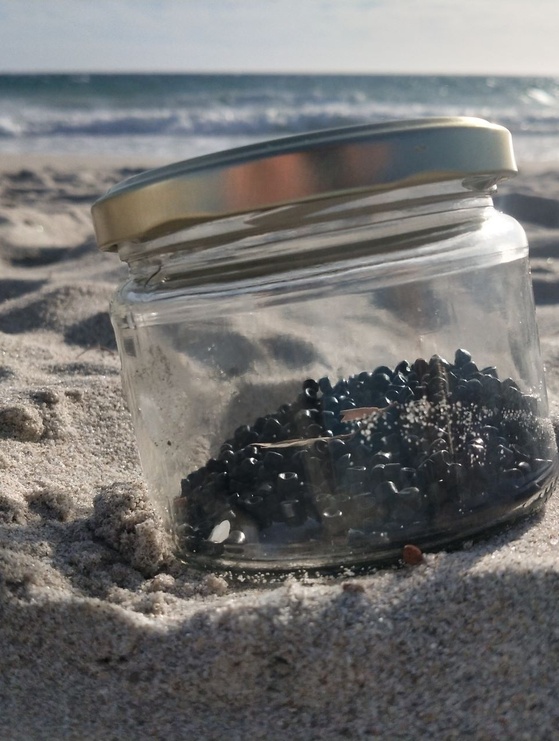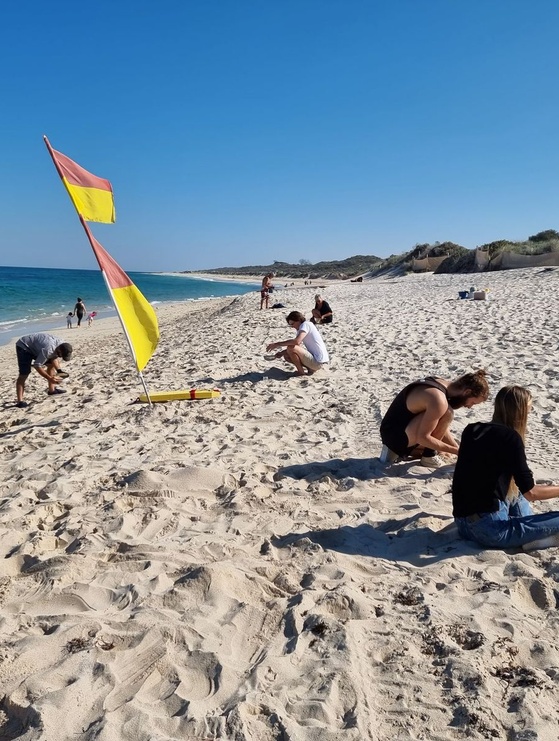News
Take action for the ocean: Join a 'Nurdle' hunt!
Monday, 27 Feb, 2023

Take direct-action by becoming a citizen scientist and going hunting for nurdles at your local beach! Taking part is easy, fun, and contributes to valuable data that demonstrates the extent of nurdle pollution around our coastlines.
Our citizen science engagement project aims to raise awareness of how these small but very toxic pellets affect marine life and damage the environment.
In 2022 during the Aussie Nurdle Hunt, we discovered 19 new locations in Australia that were impacted by these tiny plastic pellets. We work alongside FIDRA, a UK-based organization who organise the Great Global Nurdle Hunt and are committed to reducing chemical pollution in our seas. We shared our data with FIDRA to support their ongoing work to highlight the global scale and severity of the issue with a goal to #stemthetide and prevent further spills of nurdles.

It’s an easy and fun activity on the beach for everyone!
- Head to your local beach
- Invite some mates to join you (*Optional but highly encouraged)
- Search for nurdles, collecting any that you find.
- Collect any bio-beads that you find. NOTE: These will not be included in your nurdle count
- Log your findings on the form below. This gives an overall picture of the beaches most impacted by nurdles and is vital information in the ongoing task to #StemTheTide of nurdles polluting the ocean.
Note: We encourage you to submit your findings whether or not you find any nurdles.

Choose a small patch of the beach, no larger than 1-square metre and start looking to see if you can find any nurdles. It can take a few moments to spot these tiny plastic pellets but once you do you will begin to see them everywhere.
Equipment list:
- Kitchen sieve - this will help you separate nurdles from the sand
- Tweezers - these are the best tool for collecting nurdles
· A glass jar - to store the nurdles and keep them safe
How long does the hunt take?
You can spend as little or as much as you like! Some people like to spend hours on the beach looking for nurdles and enjoying the sunshine.

Headlands: Nurdles often accumulate near the headlands of bays. This is a good place to start your hunt.
Paths: Look on sheltered paths/tracks at the edge of the beach. Nurdles could have been blown or swept there during very high tides or storms.
Vegetation: Swept onshore from the sea, nurdles can get caught in vegetation at the back of the beach - they can also accumulate at the bottom of seawalls.
Tideline: The sea washes debris up the beach. Nurdles can be found amongst the seaweed and driftwood, as well as other bits of plastic and marine litter at that high tide line.
Sandy beaches: It is often much easier to spot nurdles on sandy beaches. They can be harder to spot on rocky beaches.
Riverbanks or estuaries: Most nurdles enter the oceans via rivers and waterways. Check riverbanks for nurdles caught in vegetation, often after high water.
Inland: Spills occur across the country. Checking other water bodies such as lochs, lakes, and reservoirs is also useful.
When is the best time to search?
The best time to search for nurdles on the sand is after a storm or high tide.
Before you head down to the beach or river, remember to check the conditions! We do not want you getting washed away!

Nurdles are small plastic pellets about the size of a lentil (3-5mm in diameter). These pellets are the building blocks of the plastics industry and billions of them are used each year to make all kinds of plastic products, from bottles to car parts.
After nurdles are produced, they are transported across the world in their billions. During each stage of the industrial process, from pellet to product, nurdles are spilt. When not cleaned up properly they can enter our rivers and waterways, before eventually reaching our ocean.
Nurdles are usually white or clear in colour, but you can find some that are black, green or blue as well.
Nurdles vs. biobeads
Similar to nurdles in size and appearance are bio-beads, another type of small plastic pellet. Bio-beads are used as an aeration aid in water treatment. The way to differentiate these from nurdles is that they are usually black-grey and are wrinkled or ridged.

Nurdles may be small, but their impact on marine life and the environment is huge.
As they are tiny, they can be easily overlooked, but the latest research is showing how dangerous these microplastics are to the environment. The main goal of the Nurdle hunt is to showcase how common they are on our beaches. Creatures small and large mistake hese toxic pellets for food and ingest them, leading tolong-term health issues and potential blockages in their gut which sadly often results in death.
During international transportation and shipping, ( plastic products) nurdles are often leaked into the ocean. This is a global issue. The leakage of these toxic pellets must be addressed by changing the way they are shipped and transported.
Through nurdle hunts, we are collecting vital evidence that can be used on the global stage to change legislation that will introduce higher standards and procedures when moving and handling these plastic pre-production pellets. This research is crucial in helping to prevent further catastrophic environmental disasters such as the recent Sri Lankan event. You can read more about this spill here that resulted in thousands of marine lives being lost.
Want to join our Sea Shepherd Crew and go hunting together? Find an Aussie Nurdle Hunt and Beach Clean-up event in your town here!
Count and submit your findings!
Let us know how many nurdles you have found. Even if you do not find any nurdles, please submit the form as it is still vital information!
